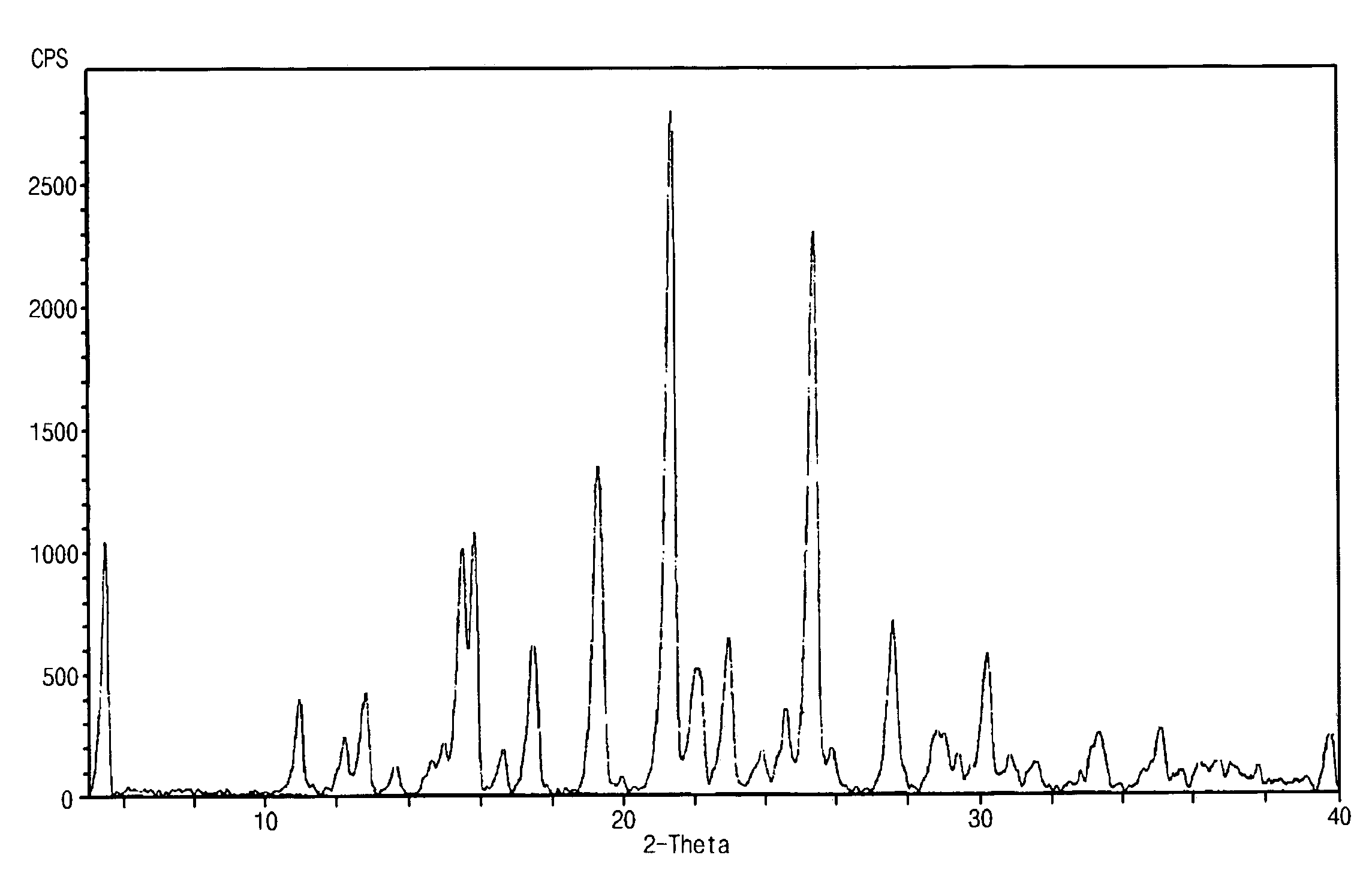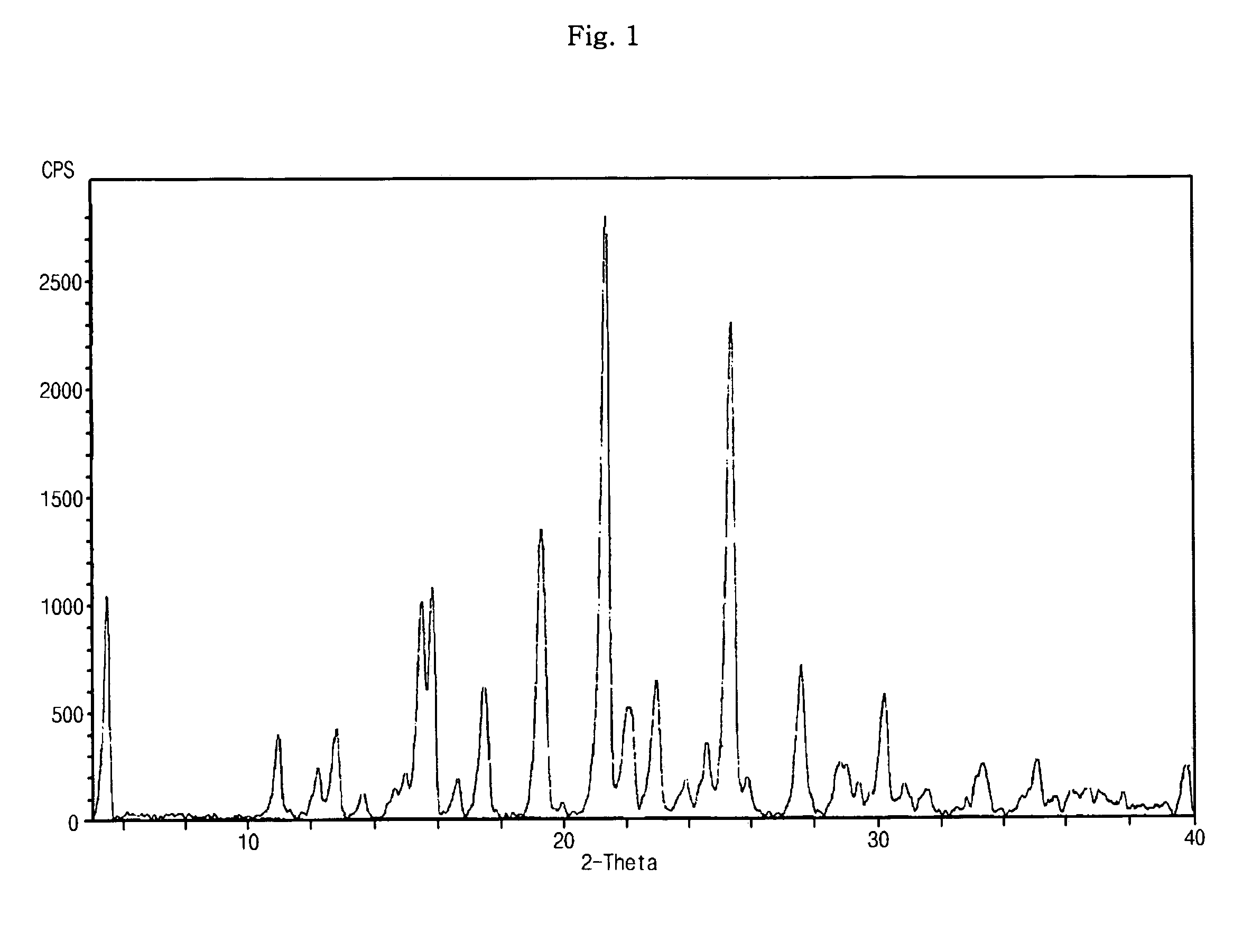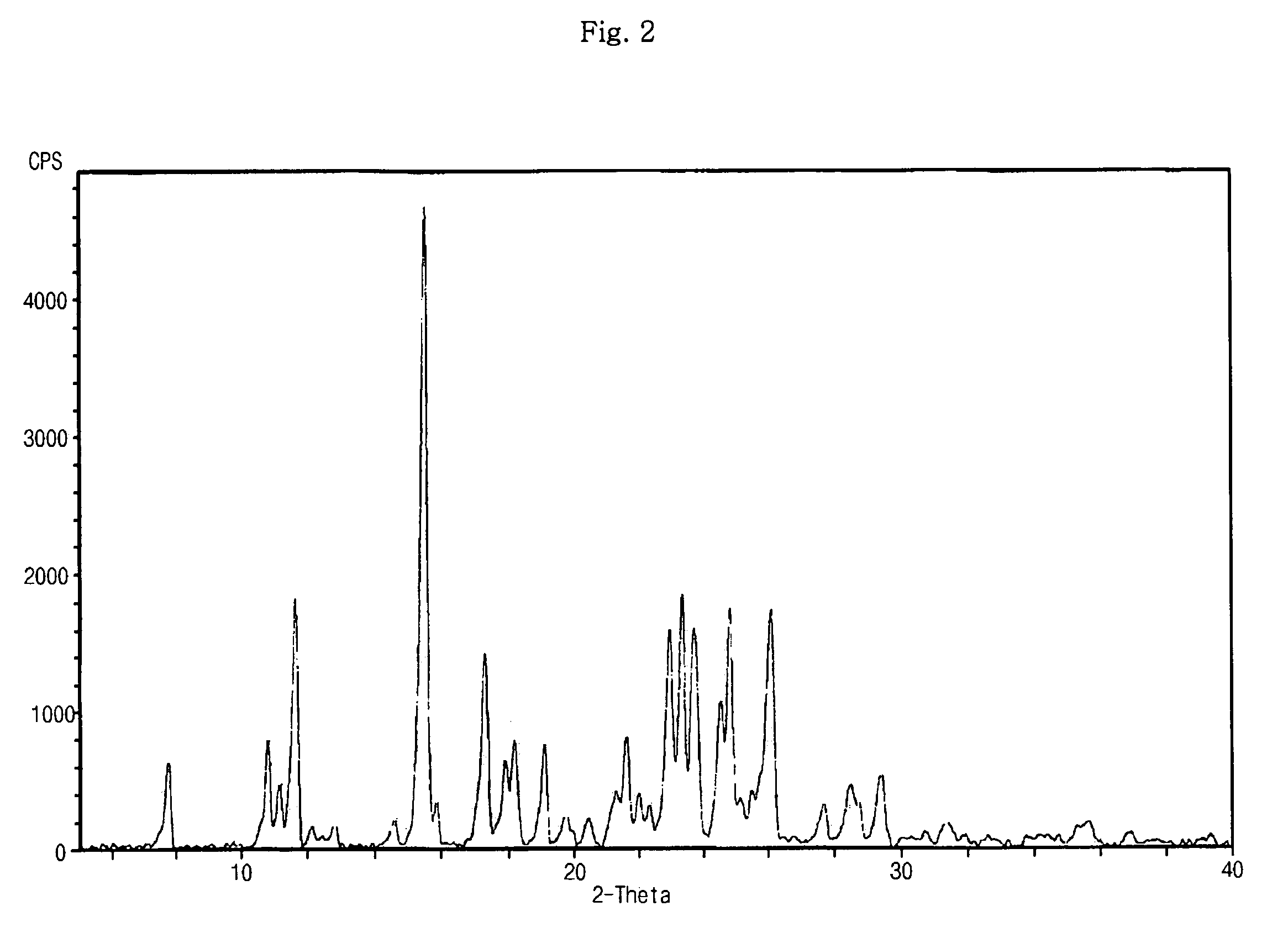Dicarboxylic acid salt of sibutramine
a technology of dicarboxylic acid and sibutramine, which is applied in the field of new dicarboxylic acid salt of sibutramine, can solve the problems of difficult to achieve such consistency, and achieve the effect of preventing pathological states
- Summary
- Abstract
- Description
- Claims
- Application Information
AI Technical Summary
Benefits of technology
Problems solved by technology
Method used
Image
Examples
reference example 1
Preparation of Sibutramine Hydrochloride Monohydrate
[0047]Sibutramine hydrochloride anhydrate was prepared according to a method described in Korean Pat. Publication No. 90-00274. Then, according to a method described in Korean Pat. Publication No. 94-08913, 10 g of the prepared sibutramine hydrochloride anhydrate was dissolved in a boiling mixture of 110 ml acetone and 1.2 ml water, and the resulting solution was hot-filtered and distilled to remove 80 ml of the solvent, thus reducing the volume of the filtrate. The concentrate was filtered to recover a generated solid. The solid was vacuum-dried, thus obtaining 9.2 g (yield: 87%) of the compound of Chemical Formula 2, which had a melting point of 195° C.
example 1
Preparation of Sibutramine Oxalate
[0048]15 g of sibutramine was dissolved in 60 ml of methanol. Oxalic acid (5.07 g) dissolved in 20 ml methanol was slowly added in droplets to the sibutramine solution at room temperature and agitated for 2 hrs. The resulting solution was cooled to 0° C., agitated for about 2 hrs, and filtered to collect deposited crystals. The crystals were washed with 50 ml of isopropyl ether and vacuum-dried at 50° C., thus obtaining 18 g (yield: 89.7%) of a white target compound.
[0049]
TABLE 2Elemental analysis (C19H28ClNO4)Unit (%)Measured valueC: 61.88, H: 7.87, N: 3.81, O: 17.63Theoretical valueC: 61.7, H: 7.63, N: 3.79, O: 17.30
[0050]Melting point: 150.4° C.
[0051]1H-NMR (DMSO-d6): 1.0 (6H, dd), 1.4 (2H, t), 1.6˜1.8 (2H, m), 1.9 (1H, m), 2.4 (2H, m), 2.5 (6H, s), 2.6 (2H, m), 2.7 (2H, m), 3.6 (1H, t), 7.5 (4H, dd)
example 2
Preparation of Sibutramine Malonate
[0052]15 g of sibutramine was dissolved in 60 ml of ethyl acetate. Malonic acid (5.72 g) dissolved in 20 ml ethyl acetate was slowly added in droplets to the sibutramine solution at room temperature and agitated for 2 hrs. The resulting solution was cooled to 0° C., agitated for about 2 hrs, and filtered to collect a deposited crystal. The crystal was washed with 50 ml of isopropyl ether and vacuum-dried at 50° C., thus obtaining 19 g (yield: 92.6%) of a white target compound.
[0053]
TABLE 3Elemental analysis (C20H30ClNO4)Unit (%)Measured valueC: 62.75, H: 8.13, N: 3.67, O: 17.12Theoretical valueC: 62.57, H: 7.88, N: 3.65, O: 16.67
[0054]Melting point: 152.4° C.
[0055]1H-NMR (DMSO-d6): 0.9 (6H, dd), 1.2 (2H, m), 1.5˜1.8 (2H, m), 1.9 (1H, m), 2.2 (2H, m), 2.3 (6H, s), 2.4 (2H, m), 2.5 (2H, m), 3.1 (2H, s), 3.2 (1H, t), 7.4 (4H, m)
PUM
| Property | Measurement | Unit |
|---|---|---|
| pH | aaaaa | aaaaa |
| pH | aaaaa | aaaaa |
| temperature | aaaaa | aaaaa |
Abstract
Description
Claims
Application Information
 Login to View More
Login to View More - R&D
- Intellectual Property
- Life Sciences
- Materials
- Tech Scout
- Unparalleled Data Quality
- Higher Quality Content
- 60% Fewer Hallucinations
Browse by: Latest US Patents, China's latest patents, Technical Efficacy Thesaurus, Application Domain, Technology Topic, Popular Technical Reports.
© 2025 PatSnap. All rights reserved.Legal|Privacy policy|Modern Slavery Act Transparency Statement|Sitemap|About US| Contact US: help@patsnap.com



